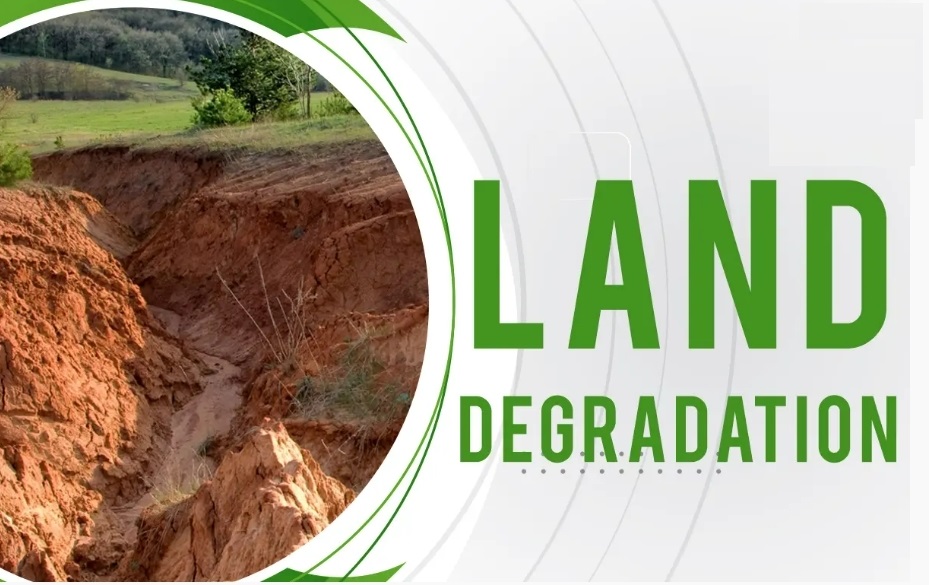Introduction:
Land degradation is a pressing environmental issue that poses significant challenges to sustainable land management and real estate development worldwide. As human activities continue to exert pressure on the land, understanding the causes, effects, and potential solutions to land degradation is essential for mitigating its impacts and preserving the integrity of our natural resources. In this article, we will explore the causes and effects of land degradation, particularly in the context of real estate, and discuss potential solutions to address this critical issue.
- Causes of Land Degradation:
a. Deforestation:
- Deforestation, primarily driven by agricultural expansion, urbanization, and logging, results in the loss of forest cover and biodiversity, leading to soil erosion, habitat destruction, and loss of ecosystem services.
b. Soil Erosion:
- Soil erosion occurs due to the removal of vegetation cover, improper land management practices, and natural factors such as wind and water erosion. It degrades soil fertility, reduces agricultural productivity, and contributes to sedimentation in water bodies.
c. Overgrazing:
- Overgrazing by livestock can lead to soil compaction, loss of vegetation cover, and degradation of rangelands. It diminishes biodiversity, disrupts ecosystems, and exacerbates soil erosion and desertification.
d. Urbanization and Infrastructure Development:
- Urbanization and infrastructure development contribute to land degradation through habitat fragmentation, soil sealing, and the loss of natural habitats. They also increase impervious surfaces, leading to runoff and flooding in urban areas.
e. Pollution and Contamination:
- Pollution from industrial activities, mining operations, and improper waste disposal contaminates soil, water, and air, posing risks to human health and ecosystems. Contaminants such as heavy metals, chemicals, and pesticides degrade soil quality and fertility.
- Effects of Land Degradation:
a. Loss of Biodiversity:
- Land degradation threatens biodiversity by destroying habitats, fragmenting ecosystems, and reducing species populations. It diminishes ecosystem resilience and disrupts ecological processes essential for maintaining healthy ecosystems.
b. Decline in Soil Fertility:
- Soil degradation leads to a decline in soil fertility, productivity, and nutrient cycling, resulting in reduced agricultural yields, food insecurity, and loss of livelihoods for rural communities dependent on agriculture.
c. Increased Vulnerability to Natural Disasters:
- Degraded landscapes are more susceptible to natural disasters such as floods, landslides, and droughts, exacerbating their impacts on communities and infrastructure. Soil erosion, deforestation, and poor land management practices increase the risk of disasters and their severity.
d. Impacts on Water Resources:
- Land degradation affects water resources by reducing water infiltration, increasing runoff and sedimentation, and degrading water quality. It exacerbates water scarcity, pollution, and conflicts over water resources in affected regions.
- Solutions to Land Degradation:
a. Sustainable Land Management Practices:
- Implement sustainable land management practices such as agroforestry, conservation agriculture, and soil conservation measures to restore soil fertility, prevent erosion, and enhance ecosystem resilience.
b. Reforestation and Afforestation:
- Promote reforestation and afforestation initiatives to restore forest cover, sequester carbon, and protect biodiversity. Restoring degraded lands through tree planting and forest restoration helps mitigate the impacts of land degradation and climate change.
c. Land Use Planning and Regulation:
- Enforce land use planning regulations, zoning ordinances, and environmental safeguards to prevent further land degradation and promote sustainable land use practices. Ensure that development projects adhere to environmental impact assessments and mitigation measures.
d. Pollution Prevention and Remediation:
- Implement pollution prevention measures and remediation strategies to address contamination of soil, water, and air. Clean-up contaminated sites, regulate industrial emissions, and promote sustainable waste management practices to reduce pollution and protect ecosystems.
e. Community Engagement and Education:
- Engage local communities, stakeholders, and landowners in land management decisions and conservation efforts. Provide education and training on sustainable land management practices, environmental stewardship, and the importance of preserving natural resources.
- Conclusion:
Land degradation poses significant threats to ecosystems, biodiversity, and human well-being, but solutions are within reach. By addressing the root causes of land degradation, implementing sustainable land management practices, and fostering collaboration among stakeholders, we can restore degraded lands, protect natural resources, and build resilient communities. Real estate professionals have a crucial role to play in promoting sustainable land use practices, integrating environmental considerations into development projects, and advocating for policies that safeguard our land and future generations. Together, we can work towards a future where land degradation is minimized, and our landscapes thrive in harmony with nature.

